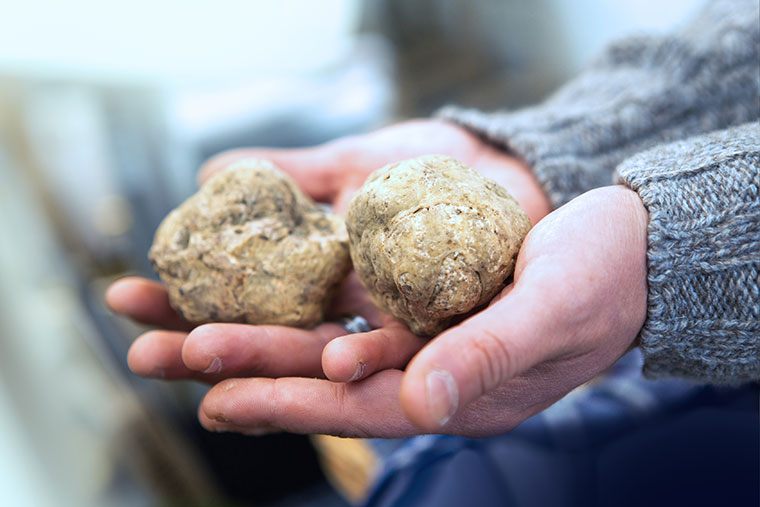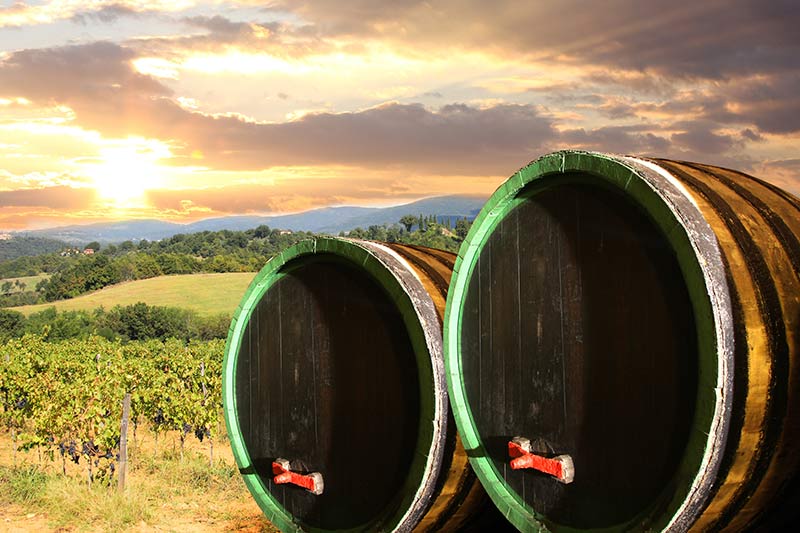Cervia, the ancient city along Italy’s Adriatic coastline was once called Ficolce, and as legend has it, the name derived from Ficol, the mighty Etruscan leader who was eager to overthrow the tyranny of Ravenna.
Its thousand year history has always been connected to the production of salt, making it a critical pillar of the Byzantine era. But salt didn’t just put this city on the map in antiquity, as the only method for food preservation its commercial importance was parallel only to gold and has continued to be at the forefront of the city’s economy.
In fact, in all of Italy the sale of salt was regulated the same way that tobacco was, with vendor’s requiring a license to sell this precious commodity. This is why outside of many “tabacchini”, the licensed cigarette vendor’s throughout Italy, you’ll often see a “Sali e Tabacchi” sign (who knew!). Knowing this really made me reevaluate salt the next time I went grocery shopping!
You may be wondering what is so special about Cervia’s “Sweet Salt” or what it means for a salt to be sweet at all. The name is a bit of a misnomer because indeed this salt is salty, the difference lies in its purity. Dried in a completely natural process, it maintains 2% humidity and a high concentration of elements like zinc, copper, iron and magnesium. This same natural process means that other less soluble elements such as sulfates, potassium and magnesium chloride are NOT PRESENT, so you don’t get that bitter aftertaste left in your mouth.
In other words, it is almost impossible to over-salt a dish when you use Cervia’s sweet salt, and you’ll never find undissolved salt in your salad. Many of Italy’s best Chef’s exclusively use “Il Sale Dolce di Cervia”, and for many it remains the secret ingredient that separates a mediocre cook from an exceptional one.
Like many of Italy’s specialty food products, now is the time to enjoy this salt, because we are heading into the end of an era. This vast area around Cervia is the only geographic location in the world where the conditions of water, soil, air and temperature are perfect for the creation of this pure salt. This area of Emilia Romagna was amalgamated in 1959 and is now under the direction of the Società Parco della Salina di Cervia, where the 827 hectares of land now use modern technology and an industrialized production to produce 50,000 tons of pure salt annually.
Now let me introduce you to “La Sallina Camillone”, the ONLY salt marsh that remains where the traditional and completely manual method of salt extraction is still used. Here you’ll find volunteers that harvest Cervia’s sweet salt daily the same way it has been gathered since antiquity. In hundreds (probably over a thousand) years, the process has remained practically unchanged, and this artisanal method produces the most pure and delicious sweet salt in the world.
Speaking to the passionate volunteers (almost all retirees), you realize this is the end of an era because there are no longer people interested in learning the manual method and continuing the daily extraction which is labor intensive. With the little government funding they receive going directly to operating costs, this unpaid profession is sure to become a thing of the past. The volunteers of ” Camillone” are the men and women who grew up on these salt plains, they were here helping their parents and grandparents work when they were children and they themselves worked here as adults.
They have salt in their veins as they say.
The salt that they produce, an impressive 1,000 tons annually, is the highest quality “sweet salt” available in the world and is also protected and recognized by the Slow Food Association. Those interested in purchasing the commercially available Sale Dolce di Cervia can find it online or in specialty stores, however the purest salt produced by the last traditional salt marsh is only available for purchase on-site…for just a few euros, a great deal if you ask me!
Visits can be arranged in Italian and English to the Camillone Salt Marsh throughout the year and I highly recommend it to anyone visiting Cervia and the Romagna region of Italy. The Salina di Camillone does not exist for tourism alone, it is a real, functioning salt marsh intended to keep the traditions of the area alive and although the extraction occurs daily if conditions are not optimal (too much rain etc), then the salt is not gathered, so it is best to call before your visit if you are interested in seeing them work.
From June 15th to September 15th you can JOIN THE SALT WORKERS at 4:30 pm daily and accompany them out into the marshes to gather the sweet salt. Please wear comfortable clothing, this is recommended for small groups and people who are over 15 years old. You must call 338 9507741 to book and a donation to the association and volunteers is recommended.
Walking out onto the plains you feel as though you are stepping back in time into a living museum. In fact, the same people that you meet on your tour are the faces you will find in MUSA, the Salt Museum of Cervia, housed in the original Salt storage and processing factory built in the 1600s in Cervia’s beautiful port area.
In the museum these volunteers have already been immortalized for their contribution to the industry, and in a strange way it is clear that soon the purest and most artisanal form of Cervia’s sweet salt will no longer exist and only the mass produced commercial product will be available.
In Emilia Romagna where I live, every specialty shop sells Cervia’s Sweet Salt. Sadly, it becomes harder and harder to find the further away from Cervia you go. Thankfully, specialty grocery stores in North America have made an effort to import some of Italy’s most prestigious products including il Sale Dolce.
Now that you know about Italy’s “white gold” why not impress your friends the next time you have them over to dinner with perfectly salted dishes. The only problem in using this salt is that once you’ve tried it, you never go back!
Angela Nardiello is an expat Canadian currently living and working in Modena, Italy with her husband and son. She is a freelance travel and fashion writer and her lifestyle blog REASONS TO DRESS shares real life in Italy.






























